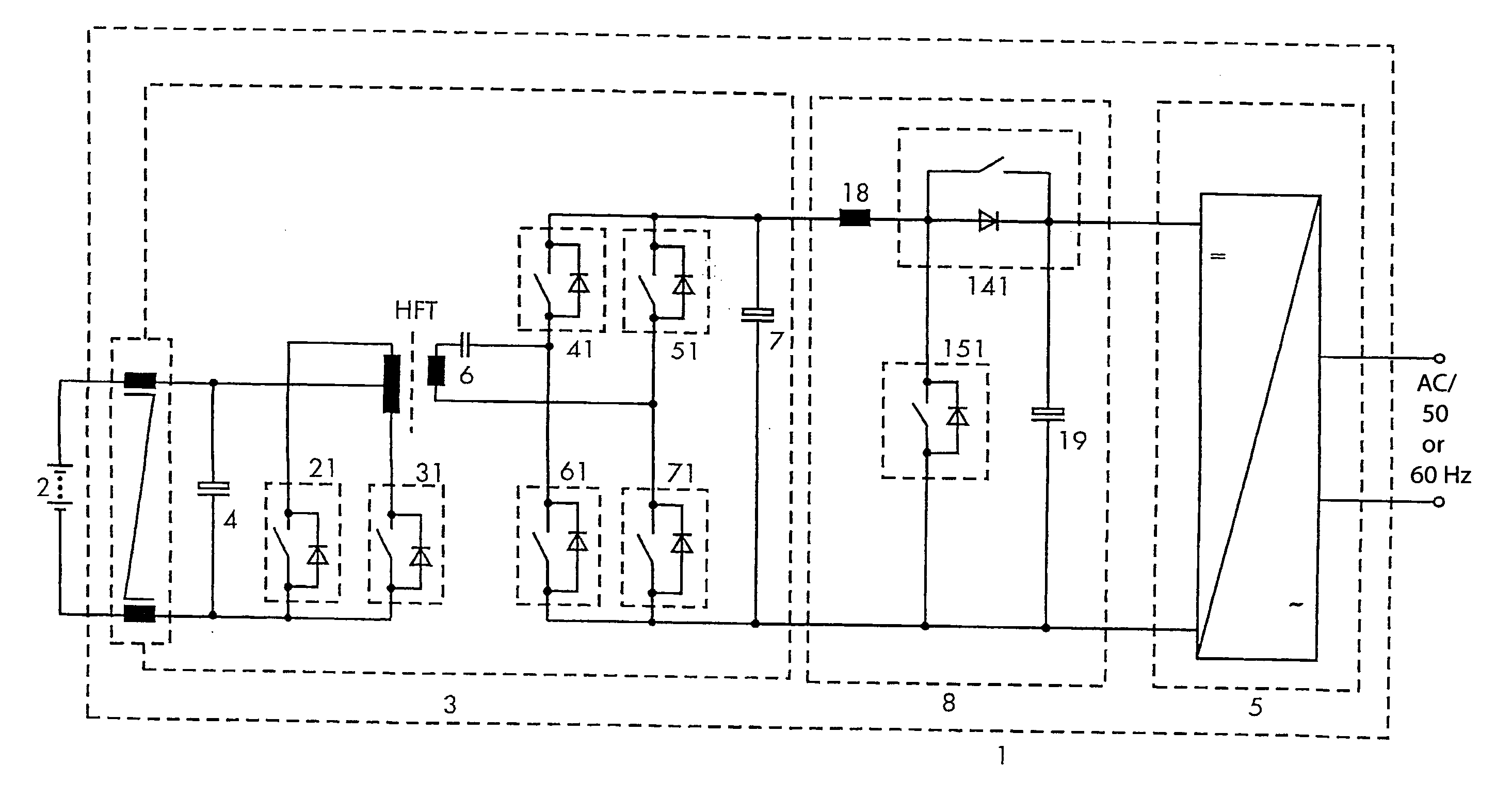Bidirectional battery power inverter
a technology of bidirectional battery and inverter, which is applied in the direction of electric variable regulation, process and machine control, instruments, etc., can solve the problems of quite high conductance loss at such small dc voltage, and achieve the effect of reducing the effective current load, reducing the cost, and facilitating manufacturing
- Summary
- Abstract
- Description
- Claims
- Application Information
AI Technical Summary
Benefits of technology
Problems solved by technology
Method used
Image
Examples
Embodiment Construction
[0029]FIG. 1 shows a power inverter 1 of the invention, for example for supplying AC consumers in island networks. Said power inverter is connected to a battery 2. The power inverter 1 includes one DC-DC converter circuit element 3 with a capacitor 4 connected in parallel to the battery 2 and one HF transformer HFT.
[0030] The power inverter 1 further includes a DC-AC converter circuit element 5 that lies on the output side of the power inverter 1 and a boost-buck chopper 8 that is connected between the DC-DC converter circuit element 3 and the DC-AC converter circuit element 5. The DC-AC converter circuit element 5 is configured to be monophase.
[0031] The inverter 1 is configured to be a bidirectional battery power inverter and serves for generating an AC output voltage from the battery voltage in a discharge mode of operation and for charging the battery 2 in the charge mode. Together with a resonant capacitor 6, the HF transformer HFT forms a resonant circuit.
[0032]FIG. 2 shows...
PUM
 Login to View More
Login to View More Abstract
Description
Claims
Application Information
 Login to View More
Login to View More - R&D
- Intellectual Property
- Life Sciences
- Materials
- Tech Scout
- Unparalleled Data Quality
- Higher Quality Content
- 60% Fewer Hallucinations
Browse by: Latest US Patents, China's latest patents, Technical Efficacy Thesaurus, Application Domain, Technology Topic, Popular Technical Reports.
© 2025 PatSnap. All rights reserved.Legal|Privacy policy|Modern Slavery Act Transparency Statement|Sitemap|About US| Contact US: help@patsnap.com



